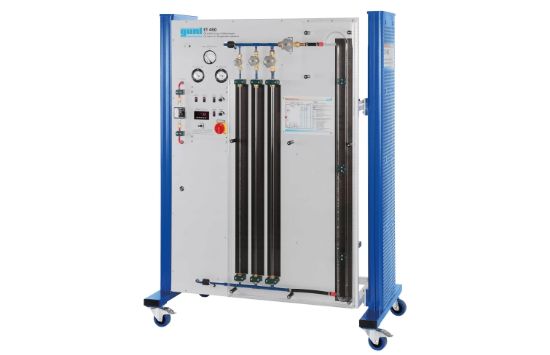The oil return in refrigeration systems is of key importance for the service life of the compressor and thus for a secure constant supply of refrigeration.
In most compressors some lubrication oil is carried along with the compressed refrigerant. In the liquid refrigerant the oil is dissolved in the refrigerant and is transported without problems. In the vaporised refrigerant the oil remains liquid in the lower parts of the system. This can result in lack of oil in the compressor. To return the oil to the compressor, a minimum velocity must be maintained in the pipes. If the velocity in the rising pipe on the intake side of the compressor is too low (partial load), the oil is not returned to the compressor due to its higher density.
The velocity in the rising pipe depends on the pipe diameter and the refrigerant mass flow. A small diameter of the rising pipe results in a high velocity and ensures the return of the oil even under partial load. However, at full load the pressure loss increases due to the small diameter.
To compensate for this disadvantage, double rising pipes are used. During partial load oil gathers in a bend at the bottom of the double pipe. The oil in the bend blocks one of the two pipes so that the refrigerant flows at high velocity through the other pipe and transports the oil to the compressor. At full load the oil in the bend is pressed upwards so that the refrigerant flows through both pipes.
At the front of the ET 460 three transparent rising pipes with different diameters and a double rising pipe have been arranged. The rising pipe selection is via valves. This allows for the oil transport at different velocities to be observed. The other components of the refrigeration circuit are at the back of the trainer. The separate or combined operation of two compressors connected in parallel enables operation at partial or full load.

